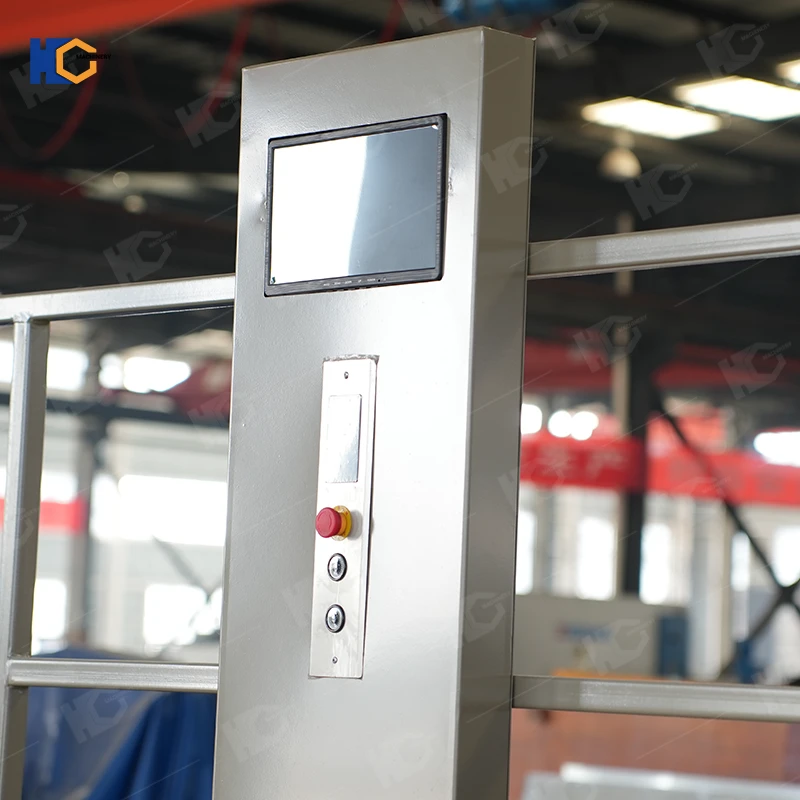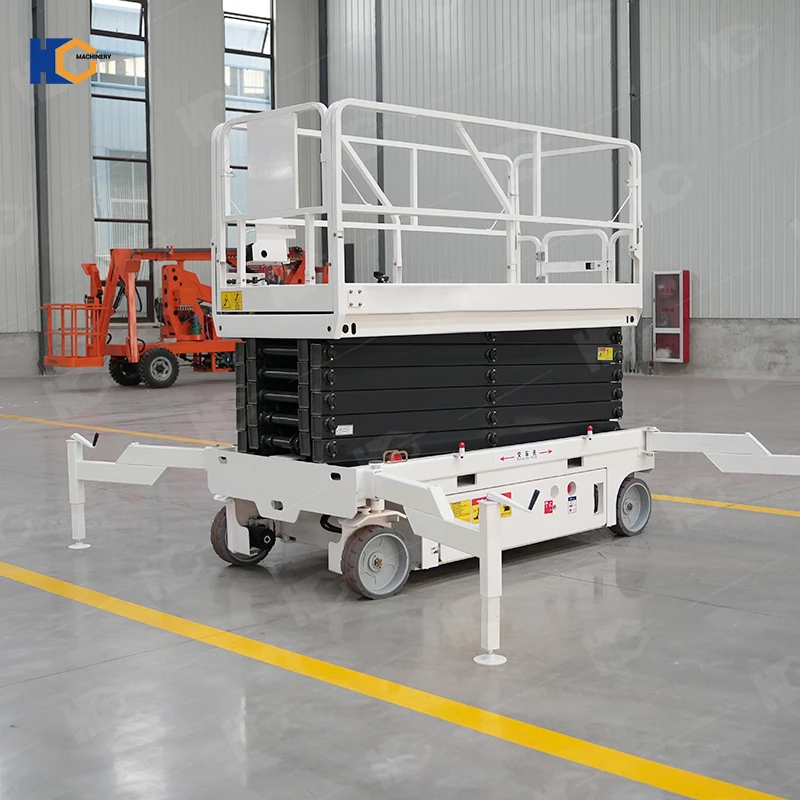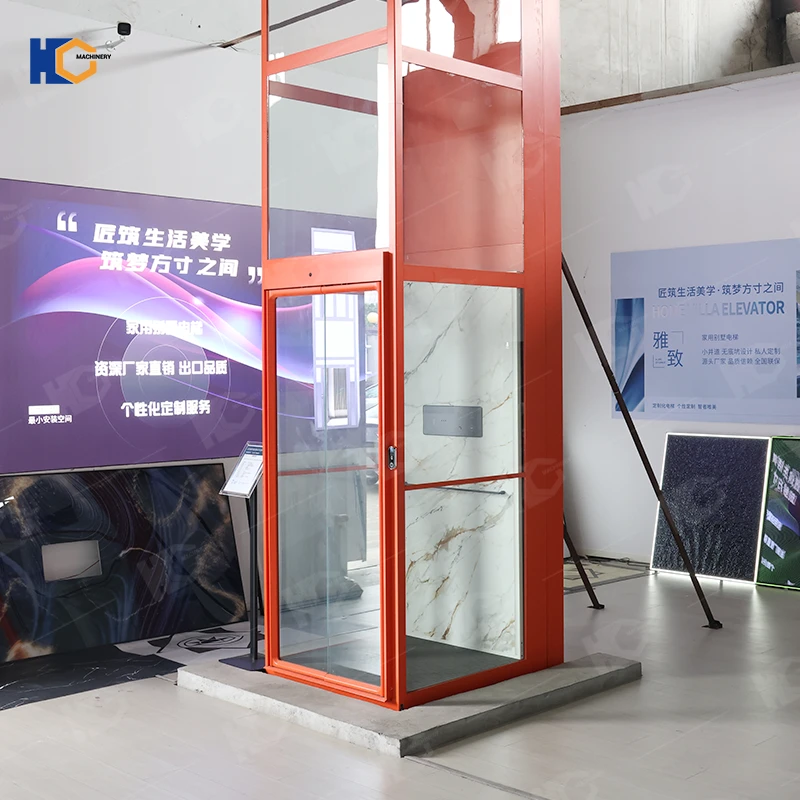A fixed scissor lift—also known as a stationary scissor lift or scissor lift table—is a permanently installed lifting platform designed to move goods or equipment vertically between different heights. Instead of being mobile like electric or self-propelled scissor lifts, a fixed scissor lift stays anchored to the ground, offering stable, heavy-duty lifting performance for warehouses, factories, loading docks, and production lines.
In the U.S. industrial world, fixed scissor lifts have become a go-to solution for improving efficiency, cutting labor costs, and reducing workplace injuries. This guide breaks down what they are, how they work, key specifications, typical applications, safety standards, and how to choose the right model.

This is our heavy-duty scissor hydraulic lift platform, specifically designed for large workshops, warehouses, and similar scenarios like yours—
Let me walk you through its core advantages:
This equipment is like a "heavy-duty lifting + multi-purpose handling workhorse" for your workshop. Many large manufacturing enterprises are now using it to replace traditional manual labor and simple ladders, as it’s both safer and more cost-effective.
Would you like me to prepare a customized plan (based on your workshop’s actual needs) + quotation sheet for you? These are other stationary lifts we've previously released; you can check them out: Fixed hydraulic scissor lift platform,If you have any ideas, please contact us.
How a Fixed Scissor Lift Works
A fixed scissor lift uses a set of crossed steel arms (the “scissors”) powered by a hydraulic system. When the hydraulics push the arms apart, the platform rises. When pressure is released, the platform lowers.
Most modern units include:
• Heavy-duty hydraulic cylinders
• Reinforced scissor arms
• High-strength steel platforms
• Electric control panels
• Safety locking systems
• Overload sensors
Industrial-grade units can run 24/7 with minimal maintenance when installed properly.

working platform

This lifting platform's core advantages are stability, safety, and practicality. The platform surface is made of diamond-patterned anti-slip material, so workers can load, unload, and maintain equipment without worrying about slipping. The hydraulic cylinders underneath are heavy-duty, ensuring a stable and smooth lifting process, even when fully loaded, without swaying.
The warning signs on the side are standard safety reminders, clearly indicating load limits, designed to mitigate safety risks. The control box next to it is incredibly easy to operate; a simple button press allows for precise height adjustment, making it easy for beginners to use.
It can serve as a "mobile workbench" in the workshop and a "high-altitude loading and unloading tool" in the warehouse. For tasks like stacking goods or maintaining equipment, it can significantly improve efficiency, and its durability and low maintenance costs further enhance its performance.
Key Features of a Fixed Scissor Lift
Even though they're simple in structure, fixed scissor lifts are engineered for demanding industrial use. Typical ranges include:
• Lifting capacity: 500 kg – 20,000 kg (1,100 – 44,000 lbs)
• Max lifting height: 0.8 m – 6 m (2.6 – 19.7 ft)
• Platform size: 1.2×0.8 m to 6×3 m
• Power supply: 220V / 380V / 480V
• Cycle frequency: Up to 20 cycles per hour
• Lifting speed: 4–10 meters per minute
Fixed scissor lifts are built to be stable, durable, and capable of continuous operation in harsh environments.
Where Fixed Scissor Lifts Are Used
A fixed scissor lift isn’t built for mobility. Instead, it excels in locations where repetitive lifting is required every day.
Common applications include:
1. Warehouses and Logistics Centers
Used to lift pallets, cartons, or containers to mezzanine floors or conveyor levels.
Helps reduce forklift traffic and workplace accidents.
2. Manufacturing Lines
Works as an ergonomic work platform so workers don’t bend or lift heavy items manually.
Automotive, electronics, and metal fabrication plants rely heavily on them.
3. Loading Docks
A fixed scissor lift can bridge the height difference between a truck bed and the dock.
This speeds up loading and unloading and reduces manual handling injuries.
4. Freight Lifts and Material Transfer
Lifts materials between floors in factories where an elevator is unnecessary or too expensive.
5. Packaging & Assembly Areas
Keeps work at a constant ergonomic height to improve efficiency and operator comfort.
Fixed scissor lifts shine in any environment where stability, high load capacity, and repetitive lifting matter more than mobility.
Types of Fixed Scissor Lifts
Different setups are designed for specific industrial needs:
1. Single-Scissor Fixed Lifts
Standard up-down lifting with simple structure.
Great for light and medium-duty tasks.
2. Double-Scissor or Multi-Stage Lifts
Added lift height for mezzanine access or high-level transfer work.
3. Heavy-Duty Fixed Scissor Lifts
Reinforced frames and oversized cylinders for high loads above 10,000 kg.
4. Pit-Mounted Scissor Lifts
Installed flush with the floor so forklifts or pallet jacks can roll directly onto the platform.
5. Conveyor-Integrated Scissor Lifts
Used in automated production lines to raise or lower conveyor sections.
Advantages of Using a Fixed Scissor Lift
High Load Capacity
Handles far heavier loads than mobile scissor lifts. Some Chinese and U.S. manufacturers offer units rated for 20 tons or more.
Stable and Safe Operation
A fixed installation eliminates tipping risks. Lock blocks, overload protection, and emergency stops come standard.
Improved Efficiency
Cuts down labor time. For example, raising a 2,000 lb pallet with a button push takes 5–10 seconds.
Long Life Span
Industrial models typically last 10–15 years with regular servicing.
Customizable for Any Industry
Manufacturers can adjust platform size, lift height, capacity, and control systems.
Safety Standards to Look For
While requirements vary by region, reputable fixed scissor lifts usually follow:
• EN1570 (EU)
• ANSI MH29.1 (USA)
• ISO 9001 quality systems
• CE certification for exported models
Safety features typically include:
• Overload protection
• Hydraulic hose burst valves
• Anti-slip platform
• Emergency stop button
• Mechanical safety locks
• Safety skirts to prevent pinch hazards
A well-designed unit always prioritizes user safety and risk reduction.
How to Choose the Right Fixed Scissor Lift
To select the right model, consider these key factors:
1. Lifting Height & Platform Size
Choose a platform large enough for your pallets, equipment, or workflow space.
2. Load Capacity
Always select a capacity 20–30% above your normal load weight to prolong machine life.
3. Frequency of Use
For continuous operations, request heavy-duty cylinders and reinforced scissor arms.
4. Installation Type
Pit-mounted lifts offer flush-floor access for forklifts and pallet jacks.
5. Power Supply
Factories in the U.S. commonly use 480V three-phase, but many manufacturers provide custom voltage.
6. Environmental Conditions
Outdoor or dusty environments require rust-resistant coatings and upgraded seals.
Conclusion
A fixed scissor lift is a high-capacity, permanently installed lifting solution designed to improve productivity, safety, and workflow efficiency in industrial environments. With strong load capacity, reliable hydraulic systems, and custom options, these lifts have become essential equipment for warehouses, loading docks, production lines, and heavy-duty manufacturing plants.
Businesses looking to reduce labor costs, prevent injuries, and streamline material handling will find fixed scissor lifts to be one of the most dependable tools in modern industry.



